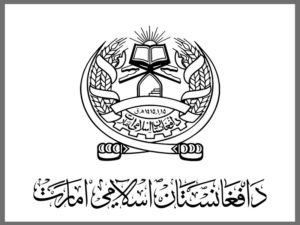
_______________
Source: Telegram

_______________
Source: Telegram
Jihadology aims to not only provide primary sources for researchers and occasional analysis of them, but also to allow other young and upcoming students as well as established academics or policy researchers to contribute original analysis on issues related to jihadism. If you would like to contribute a piece, please email your idea/post to azelin [at] jihadology [dot] net.
Click here to see an archive of all guest posts.
—
=&0=&
By Kévin Jackson
When a U.S. drone strike killed Ayman al-Zawahiri in Kabul almost a year ago, al-Qa‘ida was left yet again to find a new emir, eleven years after the death of its founding leader Usama bin Ladin. Al-Zawahiri had long prepared his organization for this moment though. Back in late November-December 2013, he had sent a missive to Jabhat al-Nusra, then al-Qa‘ida’s Syrian affiliate, conveying that “he would be absent for a time from contact for his security circumstances.” In this message, the Egyptian, anticipating his prolonged absence, devised a formal chain of succession in the event of his demise to prevent a void in al-Qa‘ida’s leadership.
Though dated, al-Zawahiri’s succession plan is still the best primary document to study when reflecting on the outlook of al-Qa‘ida’s leadership as it offers invaluable insight into the mindset of the late emir of al-Qa‘ida regarding his replacement. This transitional period appears especially challenging for al-Qa‘ida. After Bin Ladin’s killing, there was no question that al-Zawahiri was his legitimate heir, whereas today the group does not have such an obvious candidate. Further, public calls to “dissolve al-Qa‘ida” have multiplied within the militant milieu over the past few years, therefore making al-Zawahiri’s replacement even more critical to the Central organization in its quest to keep its affiliates’ loyalty and maintain its global reach.
=&1=&
When he outlined how al-Qa‘ida should handle his demise in 2013, al-Zawahiri had no less than four names in mind for his succession, which he ranked as follows: Abu al-Khayr al-Misri; Abu Muhammad al-Misri; Sayf al-‘Adl; and Nasir al-Wuhayshi. His first three choices were all fellow Egyptians with a decades-long history in jihad, which stretched back to Afghanistan in the 1980s. A member of al-Qa‘ida’s Shura Council since 2001, Abu al-Khayr had previously acted as “the main coordinator” between al-Zawahiri’s Egyptian al-Jihad group and al-Qa‘ida. He had long been highly regarded and trusted by al-Qa‘ida’s leaders, including Bin Ladin, to the point that he was privy to the 9/11 plotting. For their part, Abu Muhammad and al-‘Adl held leading roles in al-Qa‘ida’s training, military, security, and external operations committees and were serving in al-Qa‘ida’s Shura Council since the early 1990s. Finally, al-Wuhayshi was the then leader of al-Qa‘ida in the Arabian Peninsula (AQAP).
Although al-Zawahiri’s succession plan seemed very Egyptian-centric, it is worth noting that his hierarchy was no different from Bin Ladin’s. In a letter written in September 2010, the latter stated that “Shaykh Abu al-Khayr and Shaykh Abu Muhammad are above our brother (…) Sayf al-‘Adl”. The difference with al-Zawahiri was that, while Bin Ladin considered that al-‘Adl had “efforts that would benefit the jihad and the mujahidin […] in the military work”, he did not see al-‘Adl fit to become the “general manager” or even the deputy manager of al-Qa‘ida, let alone its emir.
At the time al-Zawahiri was crafting his short list, his first three choices were detained in Iran. He had thereby to rely on his fourth candidate, al-Wuhayshi. Since then, “all the branches of al-Qa‘ida know that [al-Wuhayshi] was deputy to Shaykh Ayman, and practiced his competencies entirely because of the absence of Shaykh Ayman,” according to al-Nusra. The release of an Iranian diplomat held hostage by AQAP in Yemen in March 2015 came to revitalize al-Qa‘ida’s top leadership. Indeed, in exchange for their diplomat’s release, Tehran freed six senior al-Qa‘ida figures, including al-Zawahiri’s three successors. Following his subsequent relocation to Syria, Abu al-Khayr shared with al-Nusra “a letter making clear through it that [he] was the successor to Shaykh al-Zawahiri.” As for Abu Muhammad and al-‘Adl, the duo remained in Iran, as they “were barred from departing [the country],” all the while overseeing al-Qa‘ida’s affairs.
Five years later though, al-Zawahiri had lost three of his potential successors: al-Wuhayshi was killed in al-Mukalla, Yemen, on June 12, 2015; Abu al-Khayr was killed in Idlib, Syria, on February 26, 2017; and Abu Muhammad was gunned down in Iran’s capital Tehran on August 7, 2020. Al-‘Adl is thus the only remaining successor picked by al-Zawahiri back in 2013 and the best positioned to take over, at least on paper. In practice, al-‘Adl’s ascension appears compromised by al-Qa‘ida’s own protocols, as al-Zawahiri specified that his heir must be “in Khurasan or one of the branches of the group.” Besides, al-‘Adl’s murky status in Iran has already caused his leadership to be contested internally. In Syria, al-Nusra rebuffed what they viewed as the excessive influence of al-‘Adl and Abu Muhammad precisely because the duo was “present in an enemy country (Iran),” whereas the “organizational principles for al-Qa‘ida itself stipulate that no one can enjoy competencies so long as he is not in one of the branches.” In the aftermath of al-Zawahiri’s death, it was reported that the potential nomination of al-‘Adl was facing a “large number of opponents” inside the al-Qa‘ida camp, a defiance mostly motivated by his longstanding presence in Iran, which is viewed as highly suspicious within jihadi circles.
A few months ago, a report from the U.N. Analytical Support and Sanctions Monitoring Team asserted that al-‘Adl was now “operating as the de facto and uncontested leader of the group.” The aforementioned al-Qa‘ida regulations and criticism about al-‘Adl are no minor hurdles though and should thus warrant caution regarding this claim. Besides, it would not be the first time that he was erroneously labeled as such. Back in 2011, after the death of Bin Ladin, media reports had already claimed that al-‘Adl had been appointed as the new leader of al-Qa‘ida, even though he was then still detained in Iran. The latest U.N.’s report on Afghanistan alleges that al-‘Adl may have recently relocated to Afghanistan, a development which would significantly help his case. This claim is far from making consensus though. If al-‘Adl were still in Iran with limited freedom of movement, this would likely be viewed as too problematic by the Central organization for him to be the permanent leader, regardless of his seniority or military acumen.
=&2=&
Since the death of al-Wuhayshi, Abu al-Khayr and Abu Muhammad between 2015 and 2020, al-Zawahiri has had plenty of time to find new candidates (besides al-‘Adl) for his replacement. To be sure, operational security has at times hampered al-Zawahiri’s ability to communicate with the outside world. Yet, his private correspondence with his aides, from Syria to Yemen, and his numerous public statements before his killing suggest that his courier network was functional enough for him to relay a new succession plan during that time frame. It is thus doubtful that al-‘Adl was the only designated successor when al-Zawahiri was killed last year.
While the latter’s updated short list has been kept secret, it is clear that the members of al-Qa‘ida’s Shura Council will play a pivotal role in this transition. Indeed, the organizational guidelines set up by al-Zawahiri state that if none of his options could take over, then “the brothers in the Shura of the general command are to choose a new amir.” Further, it is most likely within this top al-Qa‘ida’s body that al-Zawahiri took new candidates (besides al-‘Adl) for his replacement. Here, it is worth remembering that the first three choices of al-Zawahiri for his succession were all part of the Shura, even though their role had long been limited owing to the restrictions they faced in Iran.
Between March and June 2014, each member of al-Qa‘ida’s Shura took an oath to follow al-Zawahiri’s initial succession plan. Today, only two of these six figures appear to be alive: ‘Abd al-Rahman al-Maghribi and Hamza al-Ghamidi.
A former software programming student, al-Maghribi, a Moroccan national, lived in Krefeld, western Germany, before traveling to Afghanistan together with a small group of friends in mid December 1999. Recommended by Karim Mehdi, a German-based Moroccan veteran of al-Qa‘
ida’s camps in Afghanistan, al-Maghribi was sent straight to Bin Ladin’s headquarters in Kandahar while his companions were dispatched to a training camp. In Kandahar, al-Maghribi mixed with other

Video:
English translation:
Dr. Ayman al-Ẓawāhirī — How to Support The Palestinian Cause (En)
______________
To inquire about a translation for this video message for a fee email: [email protected]

________________
To inquire about a translation for this video message for a fee email: [email protected]

Video:
English Translation:
_______________
To inquire about a translation for this video message for a fee email: [email protected]

_______________
To inquire about a translation for this video message for a fee email: [email protected]

On the 2nd of Muharram، 1444, an air strike was carried out on a residential house in Kabul city, two days later, US President Joe Biden claimed that US troops had targeted Al-Qaeda leader Dr. Ayman al-Zawahiri in this attack, the Islamic Emirate of Afghanistan has no information about Ayman al-Zawahiri’s arrival and stay in Kabul.
The leadership of the Islamic Emirate of Afghanistan has instructed the investigative and intelligence agencies to conduct a comprehensive and serious investigation into the various aspects of the incident.
There is no threat to any country, including America, from the soil of Afghanistan, the Islamic Emirate wants to implement the Doha pact and the violation of the pact must end.
The fact that America invaded our territory and violated all international principles, we strongly condemn the action once again.
If such action is repeated, the responsibility of any consequences will be on the United States of America.
The Islamic Emirate of Afghanistan
۱۴۴۴/۱/۶هـ ق
۱۴۰۱/۵/۱۳هـ ش ــ 2022/8/4م
______________

On August 1, 2022, an air strike was carried out on a residential house in the Shirpur area of Kabul city.
At the outset, the nature of the incident was not revealed.
The security and intelligence agencies of the Islamic Emirate investigated the incident and found in their preliminary investigations that the attack was carried out by American drones.
IEA strongly condemns this attack on any cause and calls it a clear violation of international principles and the Doha Agreement.
Such actions are a repetition of the failed experiences of the past 20 years and are against the interests of the USA, Afghanistan and the region.
Repeating such actions will damage the existing opportunities.
Zabihullah Mujahid Spokesperson of the Islamic Emirate of Afghanistan
1/3/1444هـ ق
2022/8/1 م 10/5/1401هـ ش
_______________